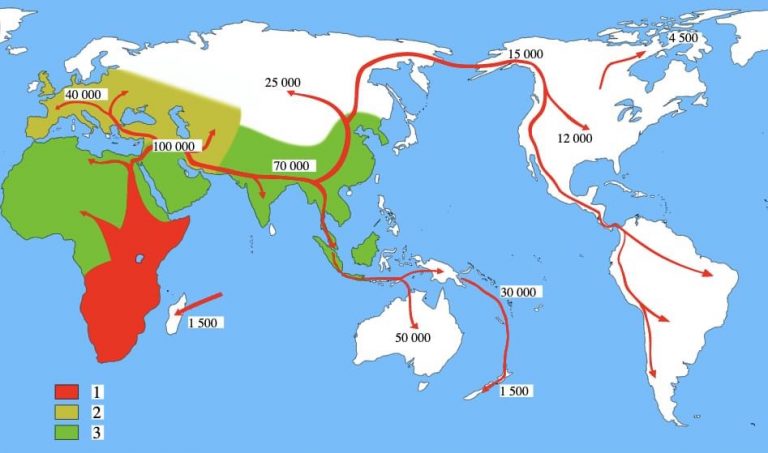Humans have migrated throughout history for various reasons such as in search of food, better living conditions, or escaping conflicts.
Some notable migration routes include:
Early Human Migration: Homo sapiens are believed to have originated in Africa around 200,000 years ago. Early humans migrated out of Africa, spreading across continents over thousands of years.
Bering Land Bridge: During the last Ice Age, a land bridge called Beringia connected Asia and North America. Many indigenous peoples of the Americas are believed to have migrated across this bridge.
Indo-European Migrations: The Proto-Indo-European people, speakers of the world’s most widely spoken language family, are thought to have originated in the Pontic-Caspian steppe (present-day Ukraine and Russia). They migrated to various parts of Europe and Asia, influencing the languages and cultures of many regions.
Trans-Saharan and Trans-Atlantic Slave Trades: These historical migrations involved the forced movement of millions of Africans to the Americas and other parts of the world, shaping demographics and cultures significantly.
Colonial Migrations: European colonial powers established colonies in Africa, Asia, and the Americas, leading to significant migration flows between colonies and the colonial powers.
Modern Migration: In recent times, migration continues to shape the world, with people moving for economic, political, and social reasons. Notable migration routes include movement from Asia and Africa to Europe, and from Latin America to North America.
These are just a few examples, and human migration patterns are complex and diverse, influenced by a myriad of factors throughout history.

